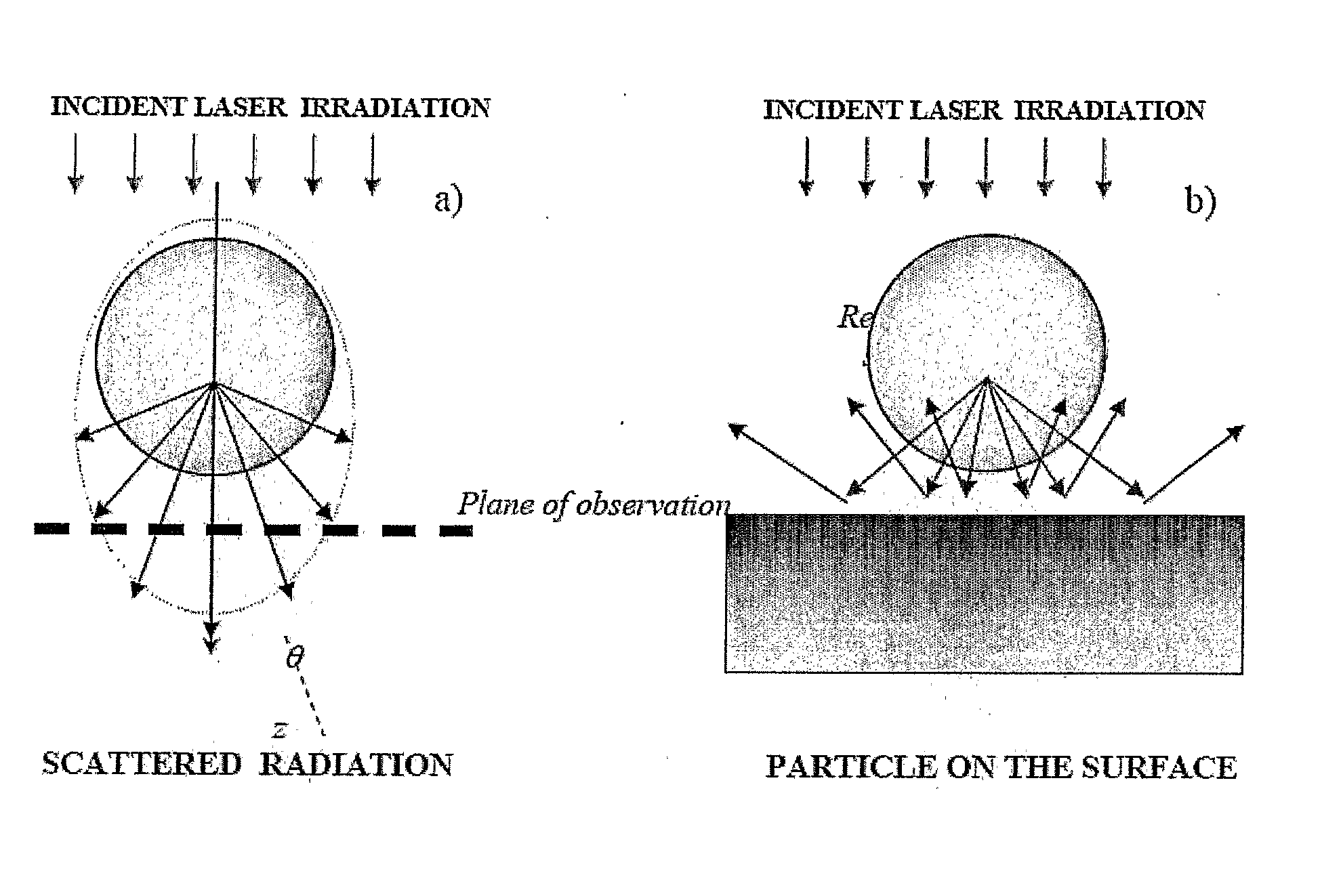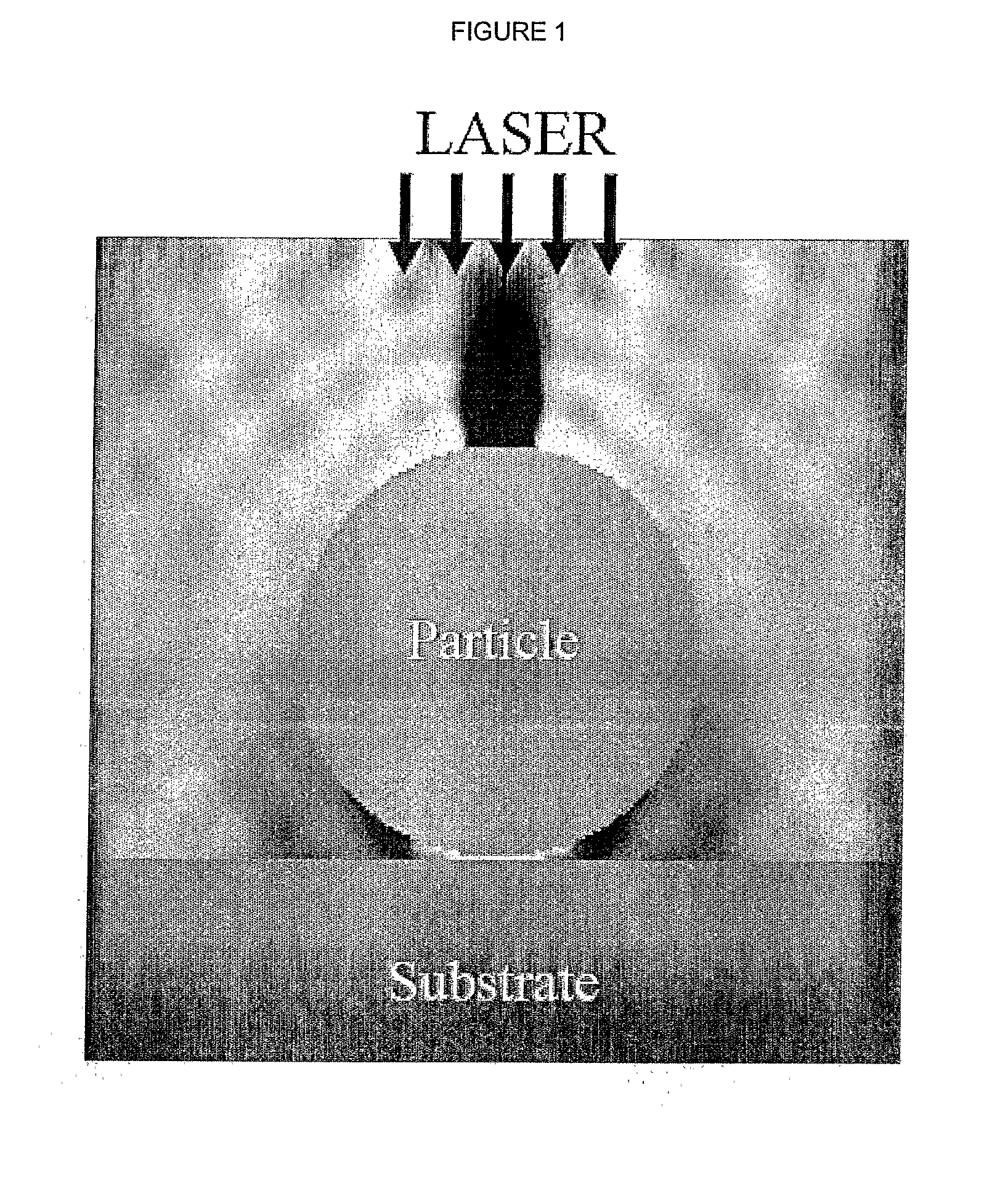Determination of Field Distribution
a field distribution and distribution technology, applied in the direction of scanning probe techniques, photomechanical devices, instruments, etc., can solve the problems of neglected influence of substrates on the distribution of filed, difficult to implement industrial applications, etc., and achieve the effect of improving field convergence and reducing field summation orders
- Summary
- Abstract
- Description
- Claims
- Application Information
AI Technical Summary
Benefits of technology
Problems solved by technology
Method used
Image
Examples
Embodiment Construction
[0030]The method is to determine the distribution of fields and Poynting vector according to Particle on Surface theory. The method takes into account the secondary scattering of radiation reflected from the substrate, as is shown in FIG. 1.
[0031]The intensity distribution (z-component of the Poynting vector) is within the x-z plane for radiation with λ=248 nm, scattered by polystyrene particle (n=1.6, a=0.5 μm) on Si surface. Gradations of the intensity are given from negative (dark) to positive (light) values. The dark area on the top of the particle corresponds to energy flux directed up, while the white area under the particle corresponds to energy flux directed to the substrate.
[0032]Many peculiarities of the scattering process can be understood on the basis of the Mie theory, where the particle is considered as a sphere.
[0033]The amplitude of the electric vector of the incident plane wave is normalized to unity, and the wave propagates along the z-coordinate (positive directio...
PUM
 Login to View More
Login to View More Abstract
Description
Claims
Application Information
 Login to View More
Login to View More - R&D
- Intellectual Property
- Life Sciences
- Materials
- Tech Scout
- Unparalleled Data Quality
- Higher Quality Content
- 60% Fewer Hallucinations
Browse by: Latest US Patents, China's latest patents, Technical Efficacy Thesaurus, Application Domain, Technology Topic, Popular Technical Reports.
© 2025 PatSnap. All rights reserved.Legal|Privacy policy|Modern Slavery Act Transparency Statement|Sitemap|About US| Contact US: help@patsnap.com



